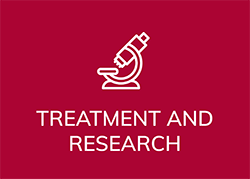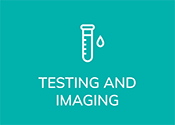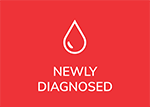MONTHLY QUIZ: B lymphocytes that cause CLL can proliferate in all the following areas of the body except:
- The lymph nodes
- The bloodstream
- The bone marrow
- The spleen
ANSWER: The correct answer is # 2. CLL is a cancer of the B cells. Therefore, it is both a leukemia and lymphoma. The cancer cells accumulate in the blood, making it leukemia with high lymphocyte counts. However, they only proliferate or reproduce in the nodes, bone marrow, and the spleen. They cannot reproduce in the blood.
NEWS:
- CLL Society is raising money to fund a new Integrative Medicine in CLL grant opportunity for the 2024 grant cycle of our research program. From the generosity of Vigyan Singhal and the Sim Einstein Research Foundation, Inc., every dollar you donate towards this project will be doubled. Join us as we fund scientific research to improve the quality of life for individuals with CLL. Learn more and make a donation at https://charity.pledgeit.org/CLLResearch23.
- Join us on September 27th for CLL Society’s webinar Why Policy Matters – Understanding How Your CLL / SLL Journey is Affected. This could be a very important webinar.
- World CLL Day is here, taking place on September 1st and kicking off Blood Cancer Awareness Month throughout September. This year, we acknowledge the emotional impacts of a CLL diagnosis.
- Dr. Koffman will be presenting research that compares CLL management in high income versus low and middle incomes at the International Workshop on CLL (iwCLL) biannual meeting in Boston, MA in October.
- CLL Society is proud to welcome two new members to our Medical Advisory Board (MAB). Adam Kittai, MD, a CLL researcher from Ohio State University in Columbus, OH, who has an an interest in how government policy effects CLL patients. And also Onyemaechi Okolo-Taku, MD from Ironwood Cancer & Research Centers, Chandler, AZ. She is a community hematologist with an interest in CLL and integrative oncology.
- Dr. Koffman has entered a clinical trial of epcortitamab to treat his relapsing CLL. You can follow his blog here.
- CLL Society will be promoting a profile question survey soon to help us better understand and help our community.
BASICS: Types of CLL Treatment – Chemo-immunotherapy (CIT)
This month we begin describing broad therapy categories with the topic of Chemo-immunotherapy (CIT). Depending on which CLL expert you consult, there would be no role or a very limited role for only a few frontline patients. Sadly, it is being used too often in the community. It consists of chemo drugs that damage the cell’s DNA and non-specifically kill anything that grows quickly, such as cancer cells, skin, hair, gut, and normal blood cells. In CLL, common drugs are fludarabine (F), cyclophosphamide (C), bendamustine (B), and chlorambucil. Chemo is more effective when combined with immunotherapy (IT), usually a monoclonal antibody (mAb) such as rituximab (R) or obinutuzumab (Gazyva). These target a specific marker (CD20) found only on CLL and normal B cells. Common CIT combinations are FCR, BR and chlorambucil plus obinutuzumab. There is NO role for chemotherapy alone to treat CLL, though that too is still used by some hematologists. Studies proved that ibrutinib is superior to both FCR and BR, making the role of CIT even more limited.
WORD/ACRONYM OF THE MONTH: CD
CD or Clusters of Differentiation are proteins on the cell surface used by flow cytometry (cellular fingerprinting) to diagnose CLL or look for measurable (minimal) residual disease. They are also a target for monoclonal antibodies and CAR-T to attack, such as how rituximab seeks CD20 or CAR-Ts seek CD19.
The CLL Society is invested in your long life. Please invest in the long life of the CLL Society

















